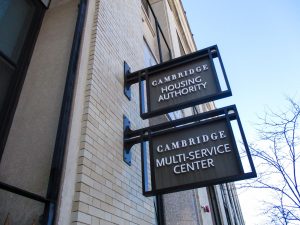Students Need a Larger Role in School Decisions, Especially During a Pandemic
February 26, 2021
A new age of youth activism has come into existence, and nowadays, even schools allow for a lot more youth-led activities. However, while many institutions claim to uplift student voices, there is still a lot of work that needs to be done before schools can claim to truly prioritize the opinions of students. In particular, CRLS has been exemplary in terms of student activism, but despite efforts from both sides, there is still a degree of disconnect between the administration and students.
There are several organizations and initiatives dedicated to gathering student input when it comes to schoolwide and citywide decisions; however, there have been many times where student input is simply not considered. When asked about her experience with student advocacy, sophomore Alif Sheikh said, “I think the school [administration] makes it hard for us students to interact with them because they usually take a long time to respond, and when they do, there’s not enough action being taken.” This statement rings true, especially when considering past situations where school administrators did not commit to any action until well after an incident occurred—or never even took action at all.
Natasha Serfaty, a senior at CRLS, explained, “There were numerous times where specific teachers were accused of harassment and because that teacher has tenure, backs from the administration were turned. When students do take action on important things like this and get shot down or ignored, it enforces the idea that their opinions don’t matter.” While CRLS has made efforts to discuss important issues with students, there has been a general consensus that the process of handling incidents is in need of serious improvement. Most of the time, it almost seems as though the school would rather discuss an issue in a way that prevents discourse and avoids confrontation. For instance, last year after a school committee member used the N-word, there was a lot of pushback from students. There were a series of assemblies meant to discuss the matter with students, but it took the power of multiple petitions and the force of youth organizations to make the committee member resign.
More recently, there has been debate over the new schedule and how the school has dealt with remote learning during the pandemic. One major problem that has become apparent with the new schedule is that there was little to no involvement from teachers, and even less from students. Although the new schedule is meant to help CRLS meet the on-screen time standards from the Massachusetts Department of Elementary and Secondary Education (DESE), many are upset with how little notice they received before the schedule was implemented. In the words of Serfaty, “Students and teachers should’ve had way more of a say in this. Of course this is the official MA guidelines for school hours required, but nothing about this pandemic year is normal, so why should rules that are for normal years be applied? The administration could’ve used their time for more beneficial, useful things for the community instead of making a new, draining schedule for teachers and students to oblige to.” There have been multiple instances where CRLS announced that they are giving precedence to mental health and students’ preferences, but that is not what they have shown. Of course, it is important to consider that CRLS was required to abide by the guidelines set by DESE, so there may have been limits to what the school could do. However, there was still more that could have been done in terms of student representation, or at least allowing students to have a say when choosing which schedule to use. In a comment regarding the lack of student representation in school decisions, a junior, Nasra Samater, stated, “It’s very obvious when school decisions are made without students, because they lack an understanding that only a student would bring.”
There has been a lot of conflict regarding student involvement and whether students actually have the power to make an impact on the school. The school has attempted to give students the opportunity to voice concerns through assemblies and initiatives that are headed by students. In fact, CRLS has been commended on many occasions for being progressive in allowing for the student government and other youth groups to have the ability to make change. Even so, there is no follow-up to those actions, and projects that are meant to create changes do not have enough traction, so they are eventually left behind.
Nonetheless, the situation is not irreparable. Sheikh shared some suggestions about how CRLS could improve their relationships with students, “A big issue is that students don’t know where to go to talk about these issues. So, having an open space for students to discuss their feelings and opinions would be very beneficial in this situation.” Besides giving students the opportunity to share their opinions, it is also essential that the school ensures that they are providing students with enough time and space to actually process information. Additionally, many students have responsibilities outside of school, including jobs and caring for their family members, and with the new schedule, many were forced to change their own schedules on short notice. This could have been a smoother transition if only CRLS had been more transparent. As explained by senior Daniel Panariti, “I’d suggest more transparency and clearness in what’s going on, since I feel like we learned things pretty last minute, and were stuck trying to catch up or adapt to whatever new decision [administrators] made.”
Despite the many conflicts and lack of student representation, it can be said that CRLS is trying to move away from its bad habits. Numerous groups from all areas of the district and school, like peer support groups and youth organizations have been focusing on rectifying these power imbalances. Teachers are also taking into account the opinions of students when planning remote and hybrid learning, and are encouraging students to share their thoughts with school administration through surveys and school committee meetings. So, while the gap between students and administrators seems daunting, with enough time, it is possible to build a bridge and reach common ground.











